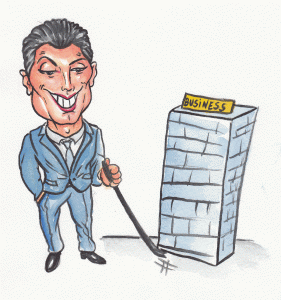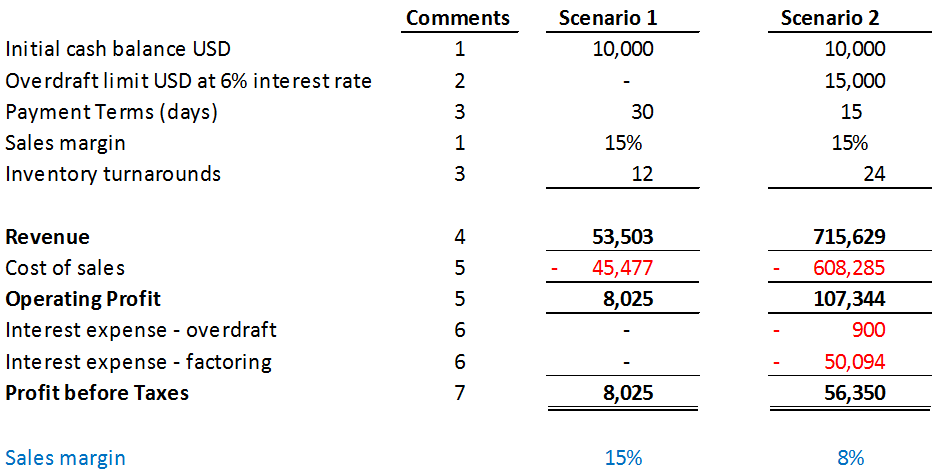The basic idea behind all financial borrowing instruments is that they allow you to buy something using other people’s money, and then to repay them later on – for example, when you eventually sell the thing you bought (or the products you used it to produce) at a profit. Of course, the lender charges you interest, in payment for the use of his money, and for the time you had it. Here are the key benefits you can enjoy by borrowing money:
- Borrowing allows you to buy expensive things (like a house or car) that you could not otherwise afford with your current income and savings.
- Borrowing gives you an opportunity to do expensive things (like starting a business, going to college or visiting a foreign country) which you could not otherwise afford at present.
- Borrowing can make it possible to accelerate your financial cash flows. For example, if you’re running a business, you could use borrowed money to purchase more raw materials, then use those to produce and sell more products (more than you would have been able to produce without the borrowed funds). Here’s another example: if you’re offered the opportunity to make an investment that has an unusually high expected return, you could use borrowed money to double your investment (and, you hope, your eventual returns). Using borrowed money to accelerate your financial cash flows is called leveraging.

Case study
Here is a case study that illustrates how leveraging works. In the table that follows, the numbers in the “Comments” column correspond to my numbered comments farther down the page.

Comments:
- Let’s say you are starting a trading deal with a big corporation. You have initial cash balance of $10, 000 which you will invest in inventory. You have negotiated a sale price that will give you a 15% sales margin (gross).
- In Scenario 1, you use only organic growth – no borrowing. In Scenario 2, you arrange for an initial overdraft (line of credit) of $15,000 at an annual interest rate of 6%, and for factoring services at 7% interest.
- Your big client is willing to buy as much of your product as you can supply but wants to pay you 30 days after any purchase. This means that if you use only the cash you have on hand ($10,000), you will only be able to make 12 product deliveries in the coming year. This is because once you make your first delivery, you will have to wait 30 days to receive payment – and you need that payment to invest in the new inventory required to produce and deliver another batch of your products. By selling your invoices to a factor, you can receive payment immediately upon delivery, refill your inventory and begin new production at once. By eliminating the 30-day payment delay, you can double your deliveries for the year (24 instead of 12), at a cost of only 7%.
- Now let’s see what happens to your revenue (assuming that you invest everything back into inventory). In Scenario 1, organic growth generates $53,500 for the year. Compare that to the highly leveraged growth that happens in Scenario 2, where you use an overdraft and factoring services: your revenue is now $715,500. Debt financing allowed you to make much higher initial investments and double your inventory turnovers.
- Your cost of sales is fixed at 85% because you initially negotiated a sales price with a 15% margin.
- The difference in Scenario 2, of course, is that you have to pay the cost of debt financing in the form of interest expenses.
- Overall, using an overdraft and factoring services allowed your business to generate profits 7 times higher than you could have using organic growth alone.
Note that when leveraged, you can increase your process speed dramatically (in theory), but your net sales margin will fall. In our case study, it dropped from 15% to 8%. Using debt to finance your business increases the cost of your products (to produce) – and that makes you more vulnerable to price competition.
The little example above just serves as an illustration. As you would expect, debt product terms and conditions could be significantly different in real life.
Here is the highly aggressive and risky debt strategy many companies adopt: Use as much debt as possible, at the lowest possible interest rates, to maximize profits. Such an approach means they go deeper into debt to grow faster. A dangerous strategy it is.
You’ll learn more about the pitfalls of financing through debt in the next chapter, “The Dark Side of Debt.”